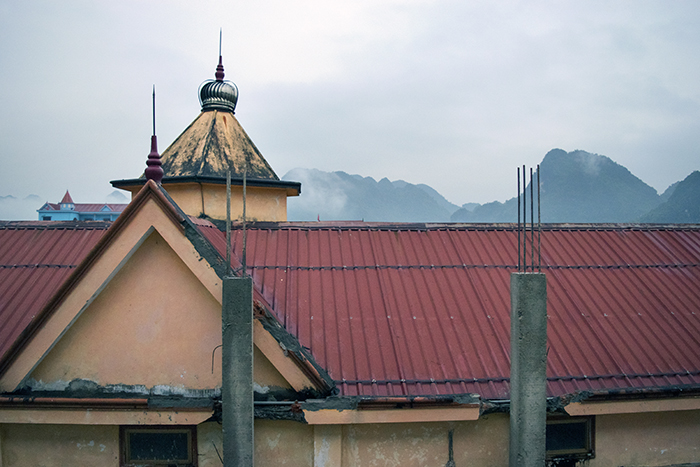
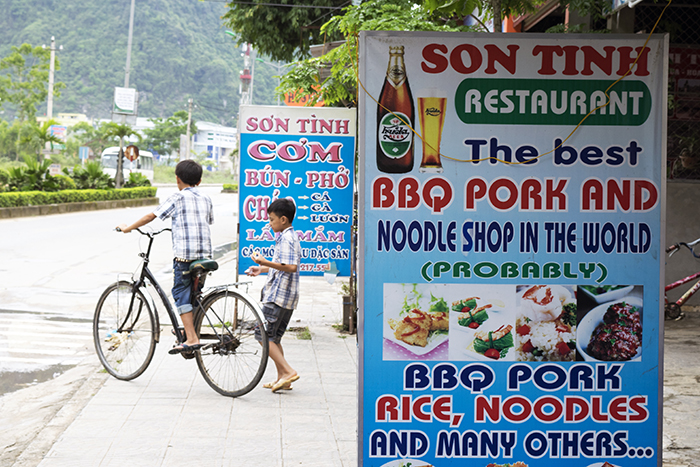
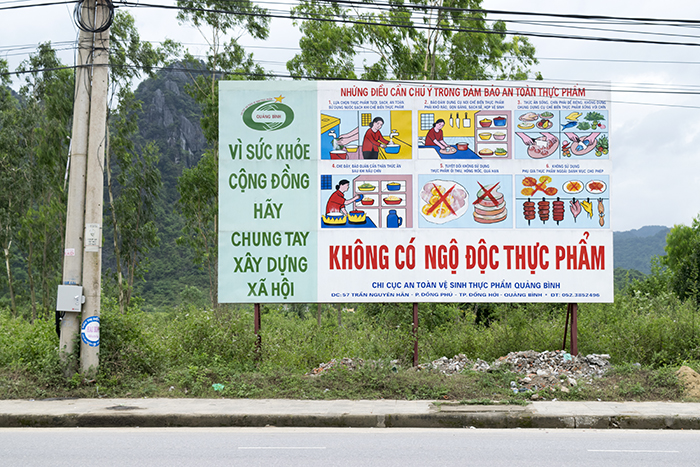

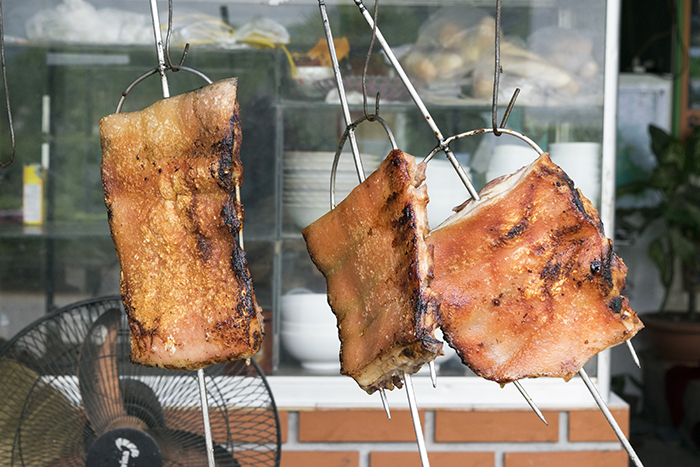

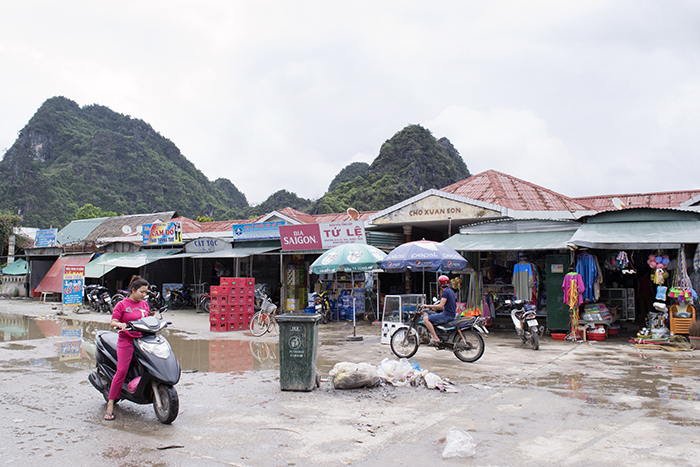

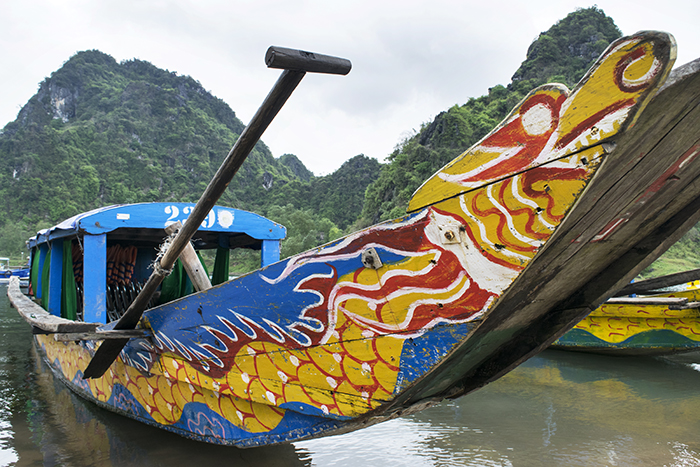
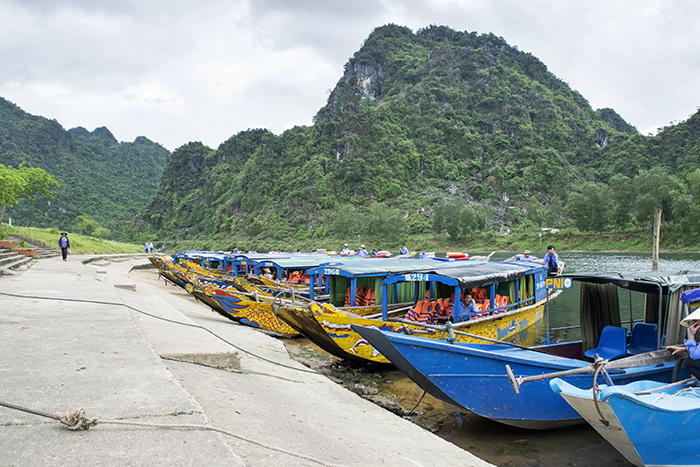

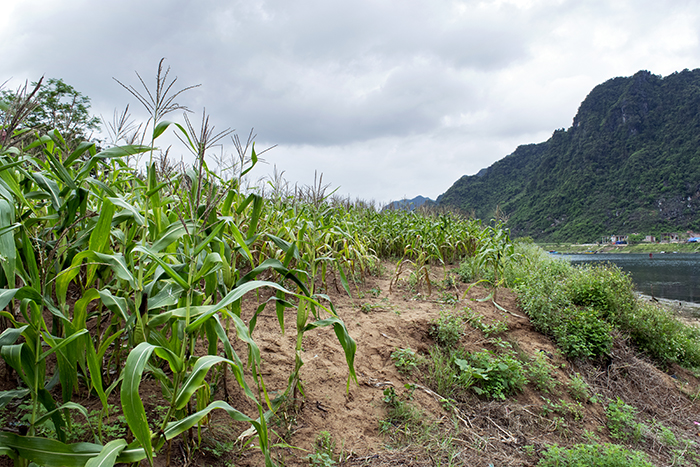
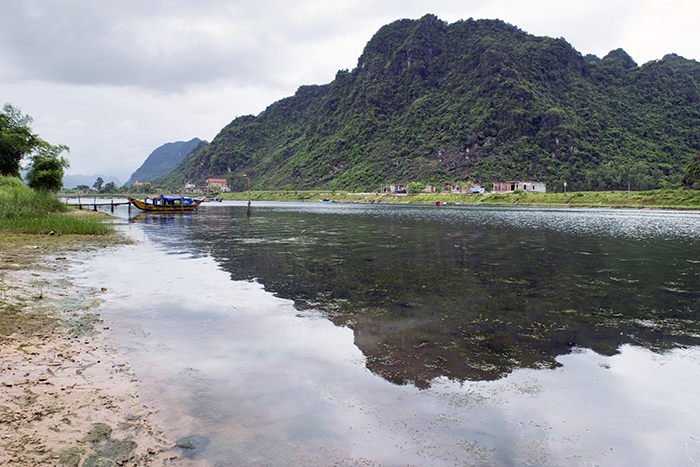
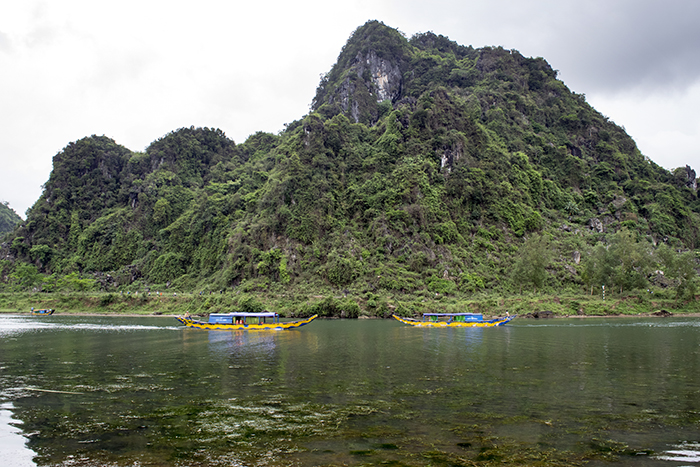

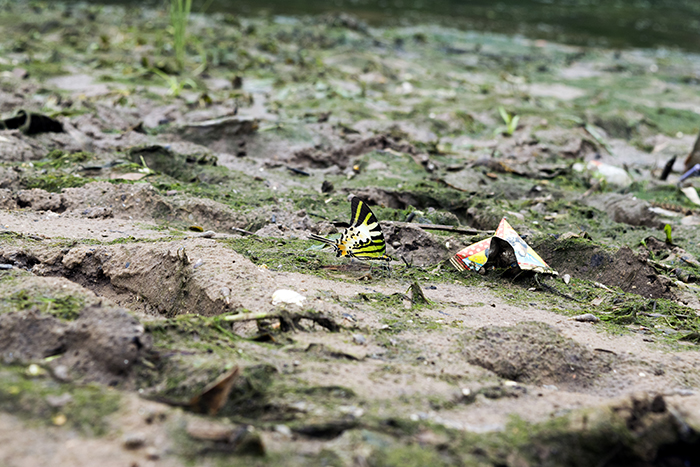
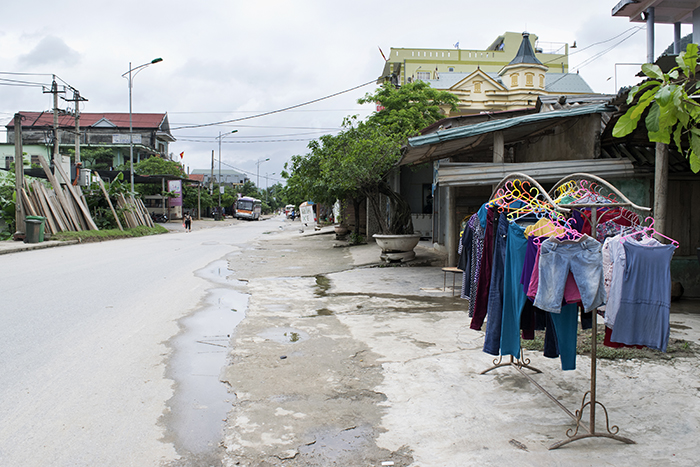
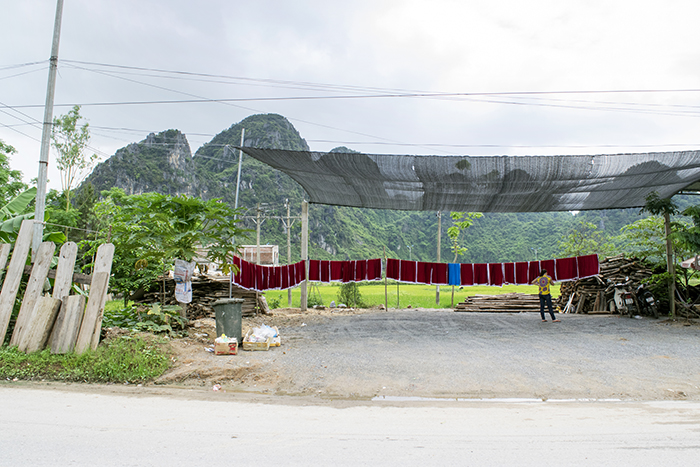
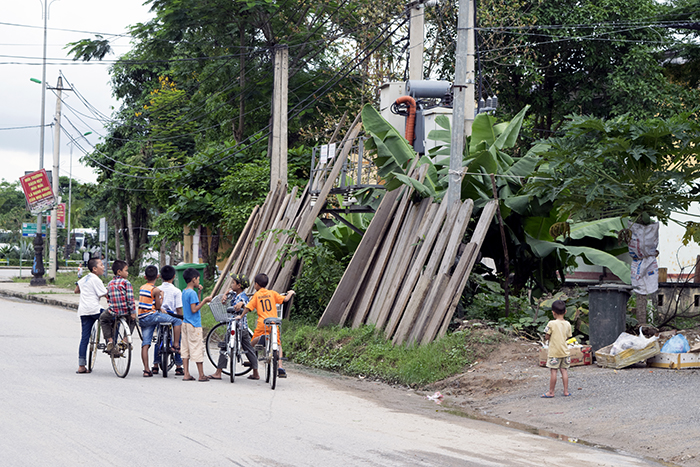

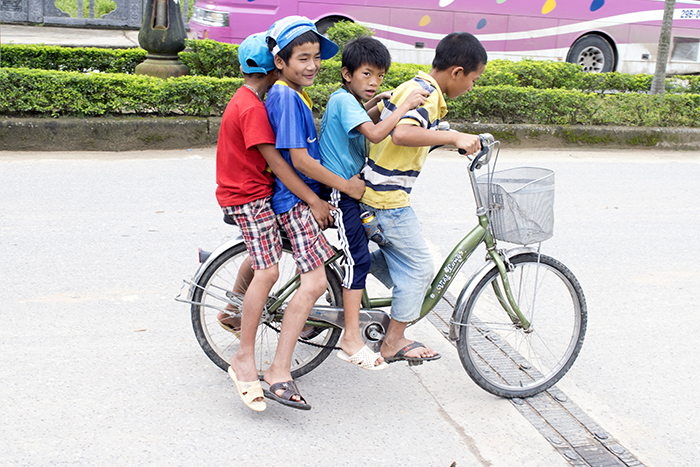



Location: Phong Nha-Ke Bang National Park, Vietnam
Dawn in Phong Nha fades the sky over this lush, mountainous place from a haunted violet-blue to a 90’s-eyeshadow periwinkle. And the strangeness of these colors is reflected in the landscape, which has the same profile as one of Dr. Seuss’s fantastical worlds. Rounded mountains shaped like the clumsily constructed sand castles of an especially uncoordinated three-year-old rise randomly from otherwise entirely flat fields. Even the winding river that cuts through it all is so calm that the surface glints green and glassy and reflects the skies, clouds, and cliffs perfectly.
Even Phong Nha’s main street, which follows the wide curves of the river before cutting inward between the mountains, is disorienting. Everything is a little bit run down, from the skinny, three-story homes painted the bright colors of 80’s architecture to the ones that line the cracked asphalt of the two-lane road. Just behind all of these buildings is a line of ghetto-like, half-built, open concrete shacks that offers everything from haircuts to motorbike rentals to cheap liquor.
I can’t imagine anyone that isn’t a backpacker, local, or nomad staying here. Vietnam’s tourism industry either just hasn’t boomed here yet or it’s bypassed the town almost completely, even though Western influence is present (there’s actually a copy of the Hollywood sign on one of the mountains reading “PHONG NHA” in tall, white letters). What buildings are in town are mostly combination hostels, restaurants, hotels, motorbike rentals, and karaoke bars. I actually ended up staying in a family’s extra room (I’m pretty sure it was the son’s bedroom and they kicked him out for a few nights) of a karaoke joint-slash-convenience store. And beyond the short snake of concrete that defines Phong Nha’s township is just unbroken farmland dotted with homes.
The town is a quick job, a reaction to the recent exploration and public opening of the cave systems of Phong Nha-Ke Bang National Park. You see, Phong Nha’s biggest tourist attraction wasn’t even discovered until the 1990’s and most of it still remains unexplored. The largest cave in the system, Paradise Cave, actually wasn’t even found or named until 2005. Yet, the cave system has now been titled a UNESCO World Heritage Site and tourists come from all over the world to see the natural wonders within these curious mountains.
I only found out about Phong Nha from other travelers; they told me that this newly opened destination is something that you shouldn’t miss if you visit Vietnam. And the town, as tiny, quiet, and offbeat as it is, is mostly just a stopping point for those visiting the caves, anyway.